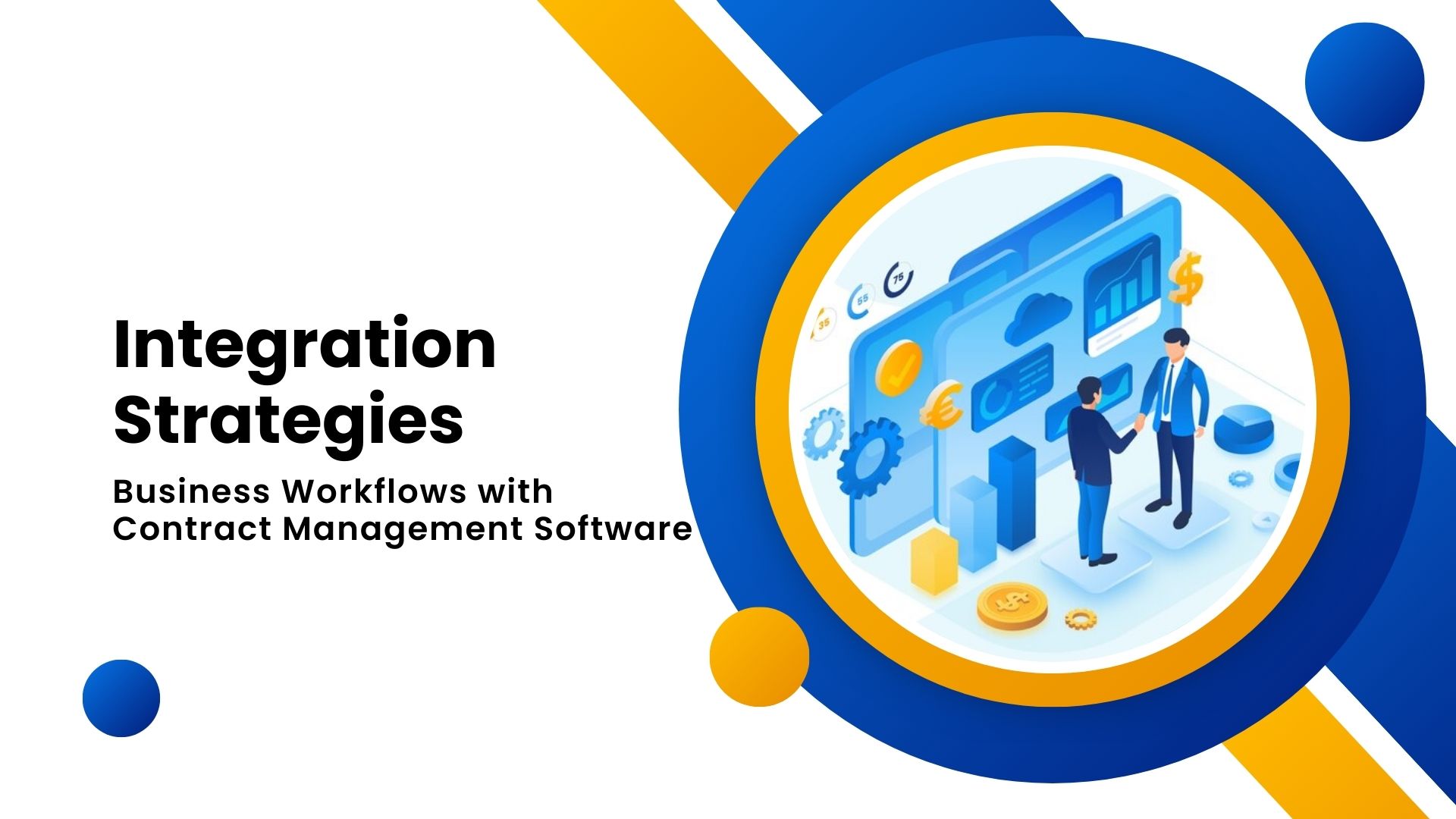Integration Strategies: Enhancing Business Workflows with Contract Management Software

Page Contents
Contracts form the backbone of any business relationship, from vendors to clients and even internal agreements. In fact, the global contract management software market reached $2,200.1 million in 2022, so it's evident that businesses are seeking robust tools to manage these crucial documents.
Efficient workflows, driven by well-integrated systems, stand at the core of this demand, highlighting the urgency for businesses to streamline their contract management processes. As we explore further, we'll see how contract management software can be a game-changer in optimizing these workflows. Join us as we uncover the strategies to ensure your business doesn't just adapt but thrives in this evolving landscape.
The Fundamentals of Contract Management Software and Its Integration
Contract management software, at its core, is a digital tool crafted to navigate every phase of the contract lifecycle. From the initial drafting and rigorous negotiating stages to the final signing and subsequent renewals, this software offers a streamlined approach to what can be a complex procedure. The allure for businesses is clear: heightened accuracy, diminished manual tasks, and a centralized hub for all contract-related documents. This centralized system ensures that consistency is maintained, compliance is upheld, and deal closures are expedited.
Yet, the real power of contract management software is realized when it's flawlessly integrated into the wider business ecosystem. An optimized integration is not just an added bonus—it's vital. When perfectly synchronized, departments from sales to legal and finance can access contracts in real time, championing a more efficient and productive workflow. Conversely, without proper integration, businesses risk wading through incoherent information, overlapping tasks, and potential mistakes. Thus, for businesses aiming to get the most out of their contract management system, mastering the art of integration is crucial.
Key Systems to Integrate with Contract Management Software
Among the myriad systems in a business's arsenal, certain tools must synchronize flawlessly with contract management software. The first is the CRM system. Implementing CRM ensures that sales teams can swiftly move from deal-making to contract drafting without redundant data entries.
Next, the ERP system should also align with contract management. Such integration ensures that deliverables, timelines, and payments outlined in contracts reflect across planning and resources. Furthermore, finance and accounting tools must be in sync. This ensures that invoicing, payments, and financial obligations mirror the terms agreed upon in contracts.
Best Practices for Successful Integration
Integration is not a one-time task but an ongoing commitment to maintaining fluidity between systems. A pivotal aspect of this is ensuring data consistency and integrity. Any update or change in one system should reflect across others, ensuring that all departments operate with the most current information.
Regular system audits and updates are also very important. This ensures that integrations are not disrupted due to outdated software versions or overlooked bugs. In addition, businesses should prioritize flexibility and scalability in their integrations. As companies grow and evolve, so do their contract management needs. Ensuring that integrations can adapt to these changes is essential for long-term success.
Overcoming Common Integration Challenges
Despite the best intentions, integration can come with its set of challenges. One of the most common issues businesses face is compatibility. Not all systems are designed to “talk” to each other seamlessly. However, with the right middleware or using APIs, businesses can bridge these gaps.
Another significant concern is data security and privacy. When integrating, businesses must ensure that encryption, access controls, and compliance measures are in place. A breach in one system should not compromise the integrity of another. In addition, while technology can be set up perfectly, human adoption is a challenge in its own right. Ensuring that staff are trained, comfortable, and see the value in these integrated systems, is vital for maximizing their utility.
Measuring the Impact of Integration on Business Workflows
Once integrations are up and running, businesses must continually assess their effectiveness. A key component of this is monitoring specific performance indicators, like the time taken from contract draft to signature or the accuracy of data across systems.
Setting up feedback loops with teams using the software can also offer invaluable insights. Are they finding the tools easier to use? Are there still delays in the process that need addressing?
Gathering this feedback ensures that integrations remain beneficial and not just a technical checkbox. To further grasp the value of these integrations, businesses can look at success stories or case studies, both within their organization and externally. Seeing the tangible benefits can be a significant motivator for continuous improvement.
Conclusion
In the dynamic world of business, contracts are constants. They dictate the terms, expectations, and relationships between parties. With the rise of contract management software, businesses have an opportunity to handle these documents with newfound efficiency. However, the real magic lies in seamless integration. By ensuring that contract management tools communicate flawlessly with other business systems, companies can truly unlock enhanced workflows, reduced errors, and a more harmonized approach to business operations.

Sean Michael is a writer who focuses on innovation and how science and technology intersect with industry, technology Wordpress, VMware Salesforce, And Application tech. TechCrunch Europas shortlisted her for the best tech journalist award. She enjoys finding stories that open people's eyes. She graduated from the University of California.